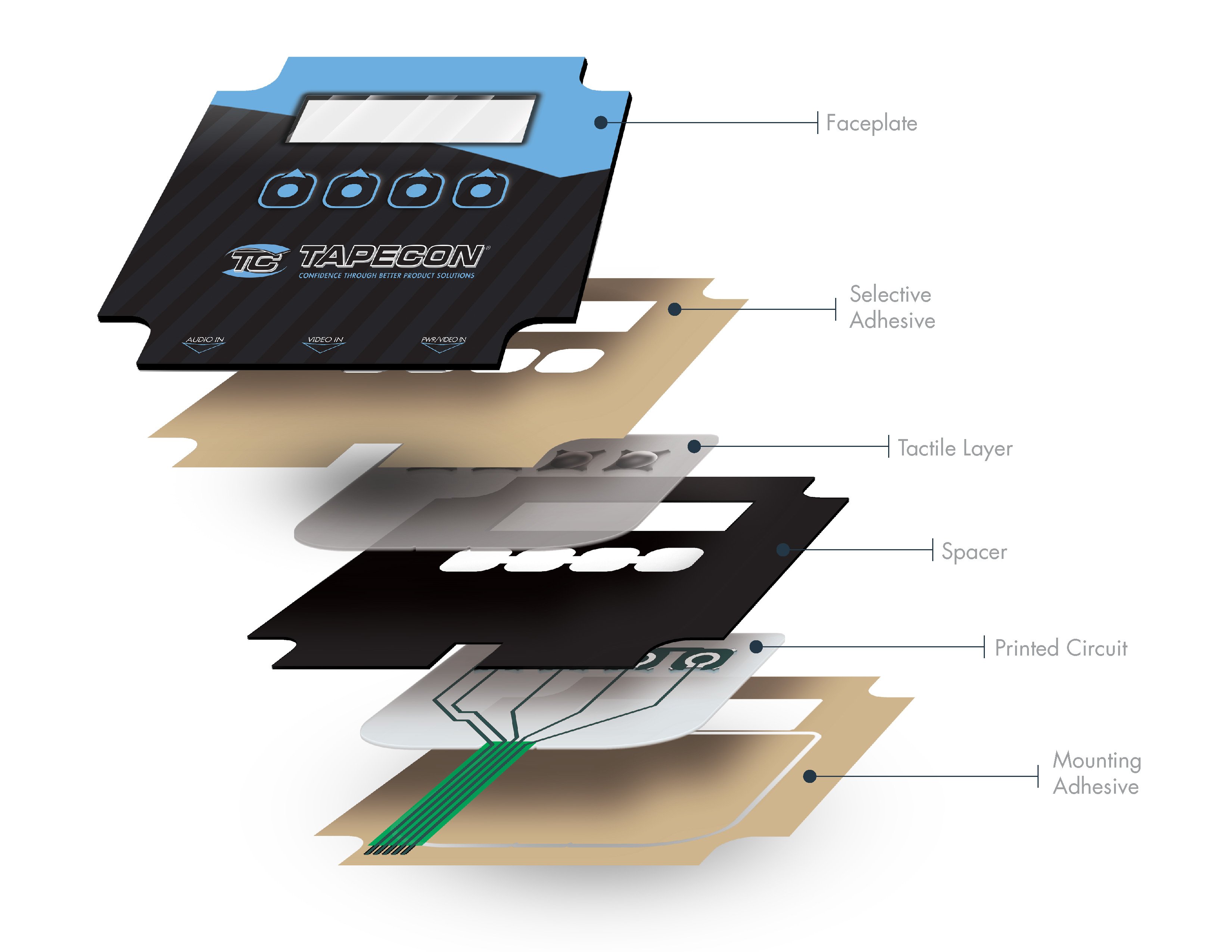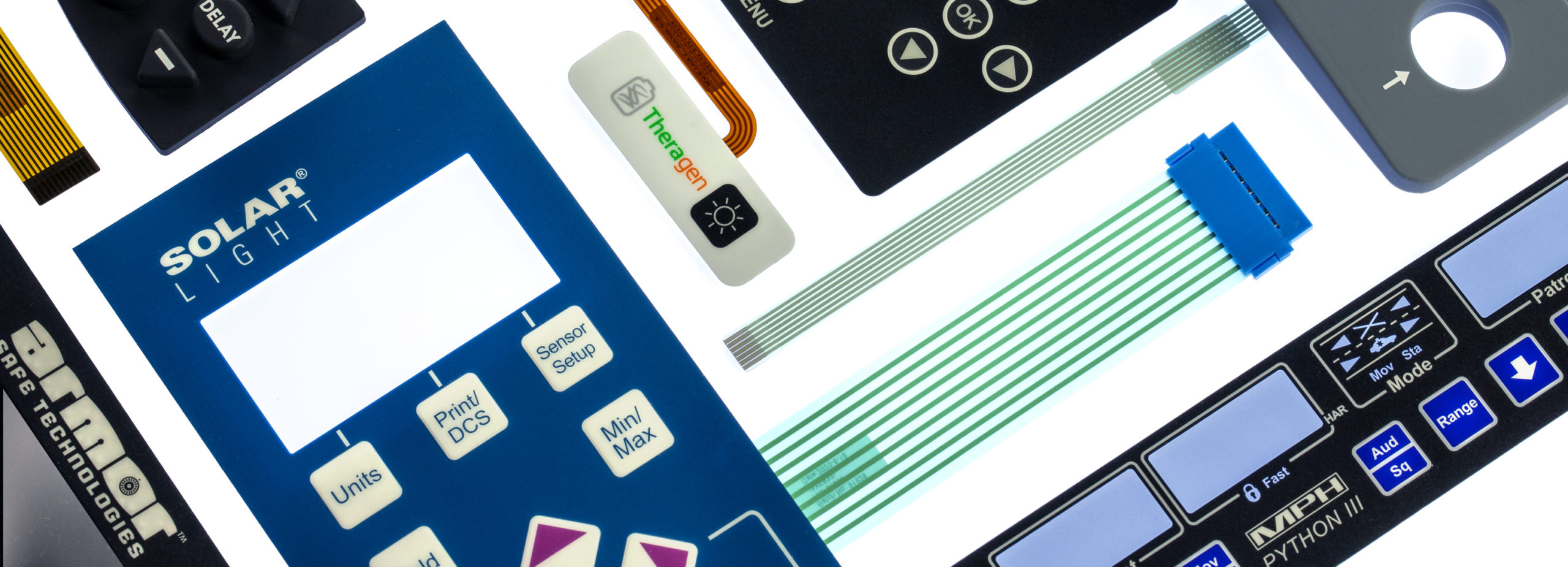Comprehending the Importance of Membrane Switches in Customer Interfaces
Membrane switches are indispensable elements in the design of efficient user interfaces, promoting not only capability however additionally improving visual charm and user interaction. Their unique functions, such as resistance to personalized styles and ecological elements, make them ideal for a diverse variety of applications throughout several sectors. As we explore the future patterns and numerous advantages related to Membrane technology, it ends up being clear that these buttons are greater than simply parts; they stand for a convergence of technology and usefulness. The effects of this modern technology on user experience deserve examining additionally.
What Are Membrane Switches?

The spacer layer, which includes adhesive homes, permits the separation of the circuit layer from the overlay, making certain that the button stays in a non-activated state up until pressed. When stress is related to the overlay, it compresses the spacer layer, bridging the void and completing the circuit in the underlying layer. This design not just lowers the physical room required for conventional mechanical buttons yet likewise enhances the durability of the tool, as Membrane buttons are normally resistant to dirt, wetness, and other ecological elements.
Commonly located in applications ranging from customer electronic devices to medical gadgets, Membrane buttons are essential to modern-day technology, providing a easy to use and reliable interface that aligns with modern style requirements.
Benefits of Membrane Buttons
While numerous button technologies exist, Membrane Switches offer unique benefits that make them especially preferable in various applications. Among the primary benefits of Membrane switches is their small layout, which permits space-saving executions in devices where realty is restricted. Their thin profile not just enhances aesthetic charm yet also assists in lightweight building.
An additional significant advantage is their resistance to ecological variables. Membrane switches are normally secured against dampness, dust, and pollutants, making them suitable for usage in demanding atmospheres, such as clinical tools and commercial equipment. This sturdiness expands the life-span of the switch, reducing maintenance expenses and improving integrity.
Moreover, Membrane switches can be customized to meet particular style demands, including one-of-a-kind graphics and shades that boost customer communication. Their responsive feedback options can also be customized to give a satisfying user experience. Additionally, Membrane buttons are cost-efficient, specifically in high-volume applications, as they can be generated successfully.
Applications in Numerous Industries

In the consumer electronics market, Membrane buttons are common in devices such as microwaves, cleaning devices, and remote controls. Their responsive feedback and visual choices boost individual experience while providing a streamlined, contemporary appearance. Furthermore, automotive makers utilize Membrane switches in dashboard controls and infomercial systems, where area is restricted, and individual involvement is vital.
Moreover, the commercial sector leverages Membrane buttons in control panels for machinery and devices, permitting user-friendly procedure in typically see here rough environments. Their resistance to chemicals and dampness ensures durability and integrity in these applications. In general, the flexibility of Membrane Switches contributes dramatically to their widespread use, making them crucial in various technical domain names.
Design Considerations for Membrane Buttons

When making Membrane buttons, numerous key considerations must be taken into consideration to make certain optimum performance and customer experience. The selection of products is essential; choosing durable, premium substratums can enhance the switch's longevity and resistance to ecological aspects such as moisture and temperature changes.
Secondly, the layout of the graphic overlay ought to focus on clearness and convenience of use. Icons and message have to be legible, and the format must promote intuitive interaction (membrane switches). Additionally, tactile responses is vital; including a responsive dome or other systems can boost the customer experience by supplying physical verification of activation
One more essential aspect is the switch's electrical efficiency. Developers have to guarantee that the conductive traces are correctly created to lessen resistance and stay clear of signal disturbance. This involves evaluating the needed actuation pressure and making certain compatibility with the digital elements they will interface with.

Future Fads in Membrane Innovation
As innovation remains to advancement, Membrane buttons are poised to advance substantially, driven by advancements in products and making strategies. One arising trend is the unification of sophisticated materials, such as versatile substratums and conductive inks, which boost durability and lower the general weight of Membrane switches. These materials not only improve the tactile response however additionally enable the layout of switches that can withstand harsher environmental problems.
Moreover, the assimilation of touch-sensitive innovations is changing traditional Membrane Switches right into even more interactive interface. Capacitive touch sensing units embedded within Membrane button panels can supply an extra intuitive and receptive user experience, aligning with the expanding need for streamlined, modern designs in consumer electronic devices.
In addition, advancements in printing techniques, such as digital and 3D printing, make it possible for quick prototyping and personalization of Membrane switches. This versatility enables suppliers to react faster to market demands and customer choices.
Lastly, sustainability is becoming a significant focus, with suppliers checking out environment-friendly products and procedures. As these fads unfold, the future of Membrane modern technology guarantees improved functionality, visual appeal, and ecological responsibility, strengthening their function in sophisticated interface across different industries.
Final Thought
Finally, Membrane Switches represent an important component in the style of user interfaces, integrating capability with visual adaptability. Their advantages, consisting of toughness and resistance to environmental elements, make them appropriate for varied applications throughout different sectors. Thoughtful design factors to consider boost individual interaction and experience. As improvements in modern technology continue, the evolution of Membrane buttons is expected to more fine-tune interface, driving advancement and enhancing usability in a significantly intricate technological landscape.
Membrane switches are integral components in the layout of reliable individual interfaces, facilitating not only capability but likewise improving visual appeal and individual communication.Membrane Switches offer as an important element in numerous customer interfaces, helping with a seamless communication in between customers and digital devices.While various switch modern technologies exist, Membrane Switches deal distinctive advantages that make them particularly preferable in different applications.In addition, Membrane buttons can be customized to meet particular style demands, integrating special graphics and shades that boost customer communication.In verdict, Membrane Switches stand for a crucial part in the layout of individual interfaces, integrating performance with visual versatility.
Comments on “A Comprehensive Guide to Membrane Switches for Product Designers”